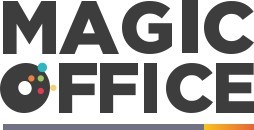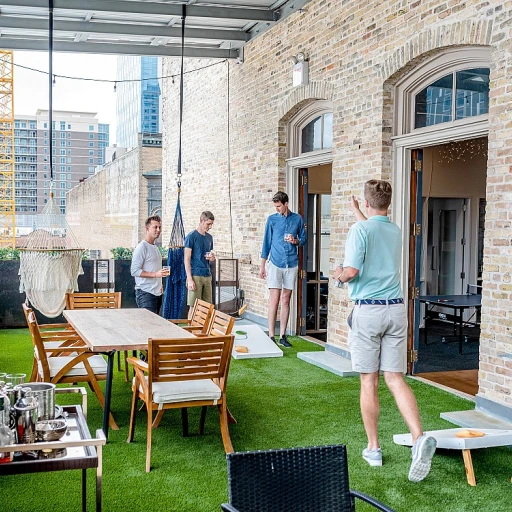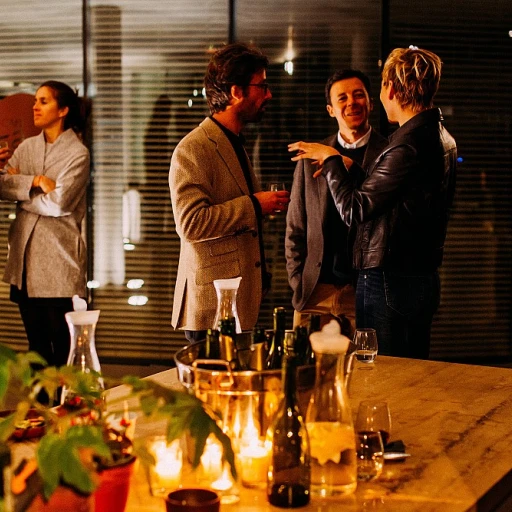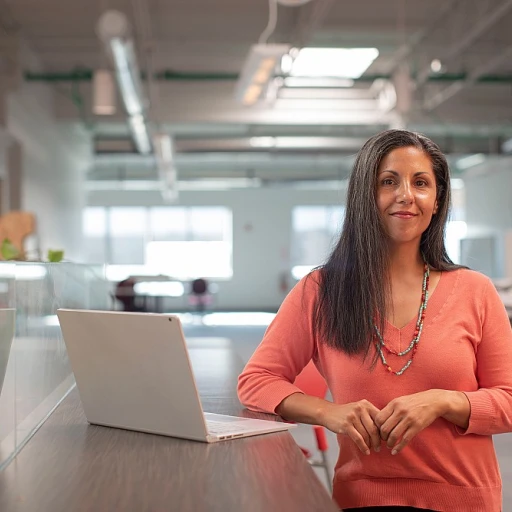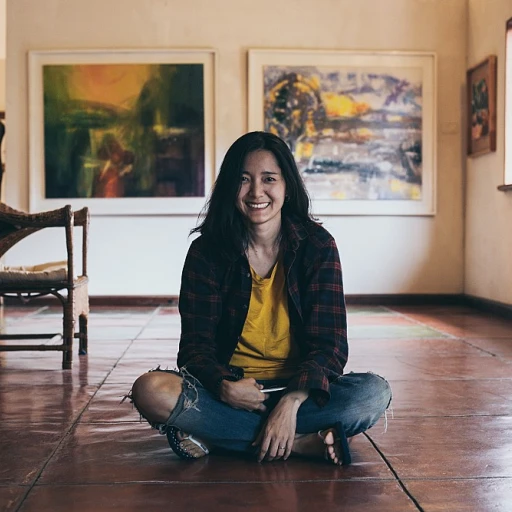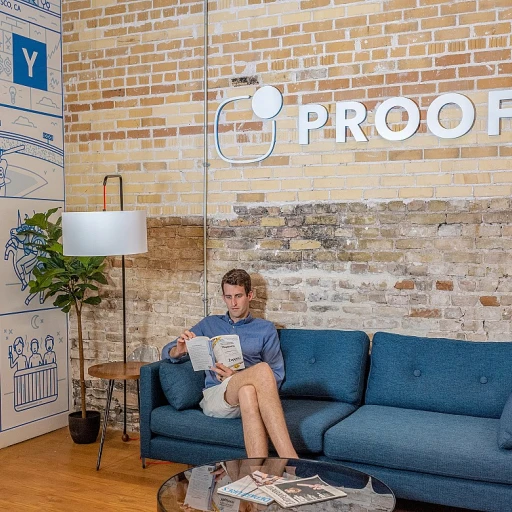
Understanding the Role of Office Design in Leadership
The Influence of Office Design on Executive Leadership
The design of a CEO office plays a crucial role in shaping the leadership environment. An executive's surroundings can significantly impact their ability to lead effectively. The office interior should foster confidence and authority, as these are essential attributes of effective leadership. Thoughtful design elements, such as strategic lighting, can emphasize this authority while promoting a sense of calm and control.
A well-thought-out ceo office layout balances both functionality and aesthetics, ensuring that it meets the demands of a busy modern ceo while also providing a welcoming atmosphere for meetings and decision-making. In a luxury ceo office, high-quality office furniture and elegant decor express status and professionalism. Incorporating personal touches into the office design can reflect the leadership style, emphasizing the CEO's unique approach and enhancing their connection with the team.
Moreover, the executive desk, often the focal point, should serve as a hub of productivity. Choosing the right office desk is paramount, ensuring ample workspace while accommodating necessary technology. By incorporating elements like natural light and modern furniture, the space becomes more inviting and conducive to high-level decision-making.
For detailed insights into selecting key office elements, including the best printer leasing options, understanding their impact on office productivity can further refine the executive workspace’s efficiency. A modern and thoughtfully designed workspace leads to enhanced productivity and better overall outcomes.
Balancing Functionality and Aesthetics
Harmonizing Utility and Visual Appeal
When it comes to designing an executive office, achieving a blend of functionality and aesthetics is essential. The office layout must cater to both the efficiency of daily tasks and the creation of an inspiring environment. This conciliation involves a mindful selection of office furniture, lighting, and décor elements that reflect the leadership style while also serving practical needs.
Firstly, consider the centerpiece of the office: the desk. An executive desk is a symbol of leadership, so opting for a modern design that embodies luxury can significantly influence the overall office style. Ensure the desk provides ample space to accommodate technological tools, such as multiple displays or other devices, while also integrating storage solutions to maintain a tidy workspace.
The choice of office furniture should not only offer comfort but also capture the essence of modern luxury. Subtle touches of elegance in furniture selection can accentuate the sophisticated atmosphere of an executive office. From luxury seating arrangements to innovative storage options, each piece should contribute to both quality and aesthetic value.
Another critical element is lighting. Adequate lighting is pivotal in influencing productivity and mood within the office space. Combining natural light with adjustable artificial lighting creates a dynamic environment that accommodates both bright and subdued moments. This balance is crucial for fostering a positive work environment.
Integrating decor and personal touches can also enhance the office's aesthetics, providing both visual interest and emotional connection. The selection of decor should reflect the executive's personal and professional identity, creating a balanced workspace that resonates with their leadership vision.
Effective executive office design is pivotal in establishing a productive and inspiring workspace. For more in-depth insights, consider exploring the best options for integrating modern technology seamlessly into office layouts.
Incorporating Cultural Elements in Design
Celebrating the Intersection of Culture and Style
In the realm of CEO office design, integrating cultural elements can transform a workspace from generic to genuinely spectacular. These design elements serve as a reflection of both the company and the leader's unique identity, enhancing the leadership role while contributing to a cohesive office environment. Consider the influence of cultural motifs and traditions. Incorporating these into the office design not only showcases a commitment to diversity but also creates a workspace that exudes a sense of respect and understanding across global boundaries. This can be achieved through art, furniture design, or even specific decor pieces that echo the nuances of a region or culture.Personal Touches, Big Impact
While aesthetics and functionality may drive the primary design, personal touches allow the CEO's character and vision to shine through. Custom office furniture or bespoke elements, such as a uniquely designed executive desk or traditional lighting fixtures, can add layers of warmth and sophistication to the room. This not only supports the leadership style but also fosters a more engaging and productive atmosphere for all those who enter.Modern Luxury Meets Time-Honored Tradition
A luxury office design does not shy away from fusing modern office elements with cultural classics. Incorporating natural light through large windows, complemented by contemporary decor, can draw attention to culturally significant art pieces or textiles, ensuring the space is both inviting and inspiring. This blend of old and new speaks to a leadership style that values innovation without losing sight of heritage. Thoughtful lighting choices, intentional use of space, and an eye for blending design ideas create an executive office that seamlessly marries modern luxury with timeless elegance. Every element within a CEO's office, from the desk to the smallest decor piece, should align with the broader vision of productivity and leadership. For those seeking further insights, explore methods to enhance efficiency through carefully chosen design choices that resonate on both a professional and personal level.Optimizing Space for Productivity
Enhancing Productivity through Strategic Space Utilization
Optimizing the office space for productivity requires a nuanced approach that marries functionality and aesthetics. A well-decorated workspace not only reflects the CEO's leadership style but also amplifies the environment’s potential to inspire productivity. Modern office design emphasizes open areas with minimal distractions, facilitating creative ideas and effective workflows.- Efficient Desk Layout: The placement of the office desk is paramount in creating a functional workspace. A strategically positioned executive desk with access to natural light can elevate the mood and efficiency of daily operations, making modern ceo spaces truly exemplary.
- Integrating Luxury and Comfort: While luxury office furniture adds a touch of elegance, it is crucial to select executive office items that are ergonomic and supportive for long-term use. This balance ensures that the office interior embodies both style and comfort.
- Pioneering Design Elements: Incorporating contemporary design elements like adjustable lighting can significantly impact productivity. Lighting tailored to different tasks can reduce eye strain, increasing focus during high-stakes decision-making processes expected in a ceo office.
- Personal Touches and Decor: The addition of carefully curated decor and personal touches can make a modern luxury workspace feel both personalized and motivating. It reflects the personal brand and ethos of leadership, creating a harmonious atmosphere synonymous with strong leadership.
- Space for Flexibility and Innovation: Modern office environments favor open areas that promote communication and collaboration. An adaptive design approach allows the space to morph based on evolving needs, encompassing elements like mobile furniture and flexible seating arrangements.
Sustainability in Office Design
Creating an Eco-friendly Workspace
Incorporating sustainability into the office design, especially in a luxury CEO office, goes beyond aesthetics and plays a crucial role in shaping a modern office environment that is both functional and responsible. Choosing sustainable materials in design elements can enhance the overall workspace experience while ensuring that the company practices align with global sustainability goals. To create an eco-friendly workspace, consider the following strategies:- Sustainable Materials: Opt for furniture made from recycled or sustainably sourced materials. This choice not only elevates the luxury style of the executive office but also underscores a commitment to environmental responsibility.
- Energy-efficient Lighting: Implementing LED lighting or fixtures that make use of natural light can significantly reduce energy consumption while enhancing the office interior. Smart lighting systems can adapt based on occupancy and time of day, adding a modern touch to your lighting design.
- Natural and Indoor Greenery: Incorporate plants within the office decor to improve indoor air quality and add a touch of nature to the interior design. Vertical gardens or potted plants can create a tranquil environment, boosting productivity and creativity.
- Recycled Office Desk and Executive Furniture: Choose office furniture that utilises recycled metal or reclaimed wood. These pieces not only serve the functional needs of an executive desk but also align with the ethos of sustainable luxury.
- Waste Reduction Initiatives: Encourage practices that minimise waste, such as paperless communication and recycling programs. Designing spaces to accommodate recycling stations can support these initiatives effectively.
